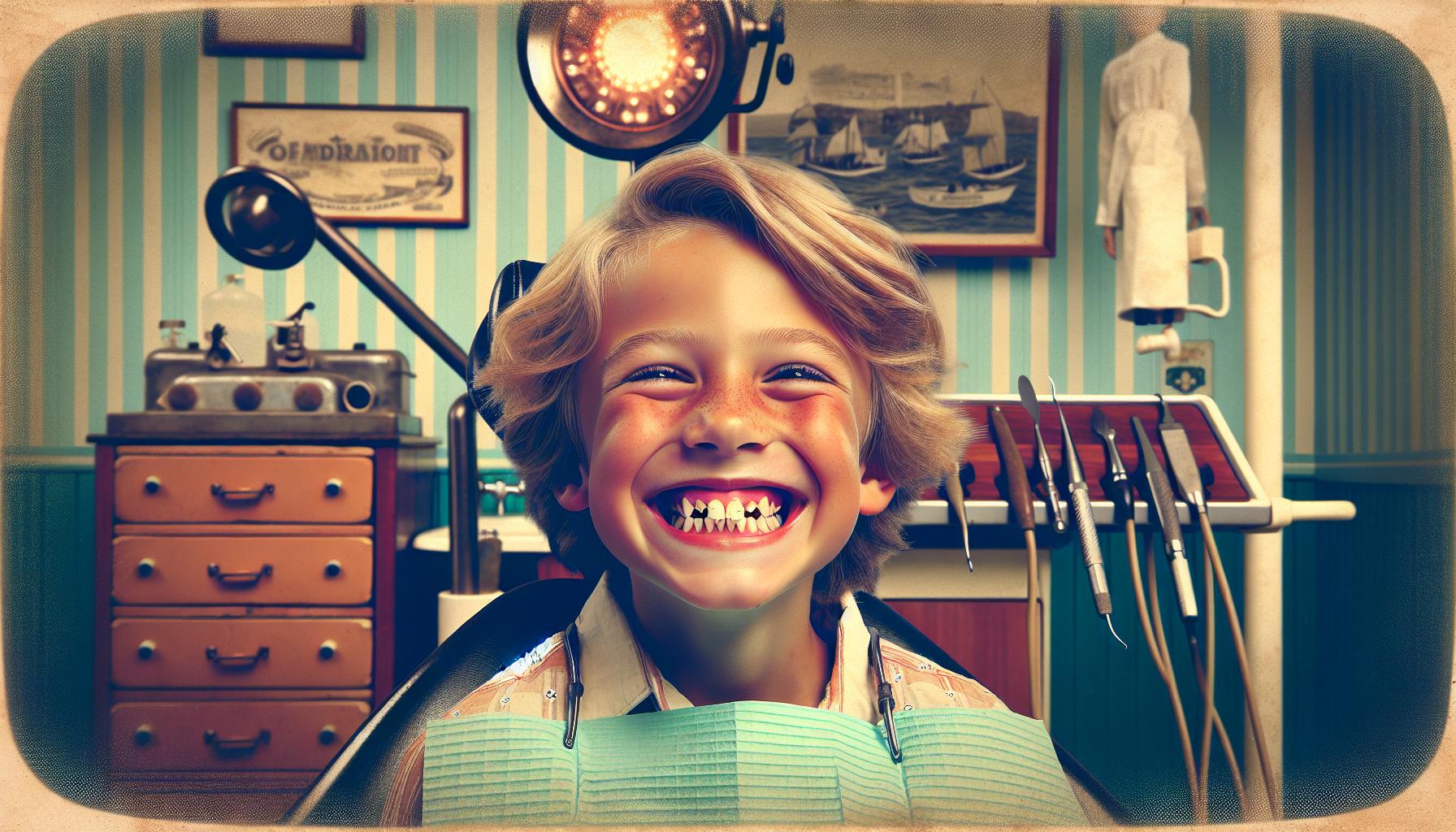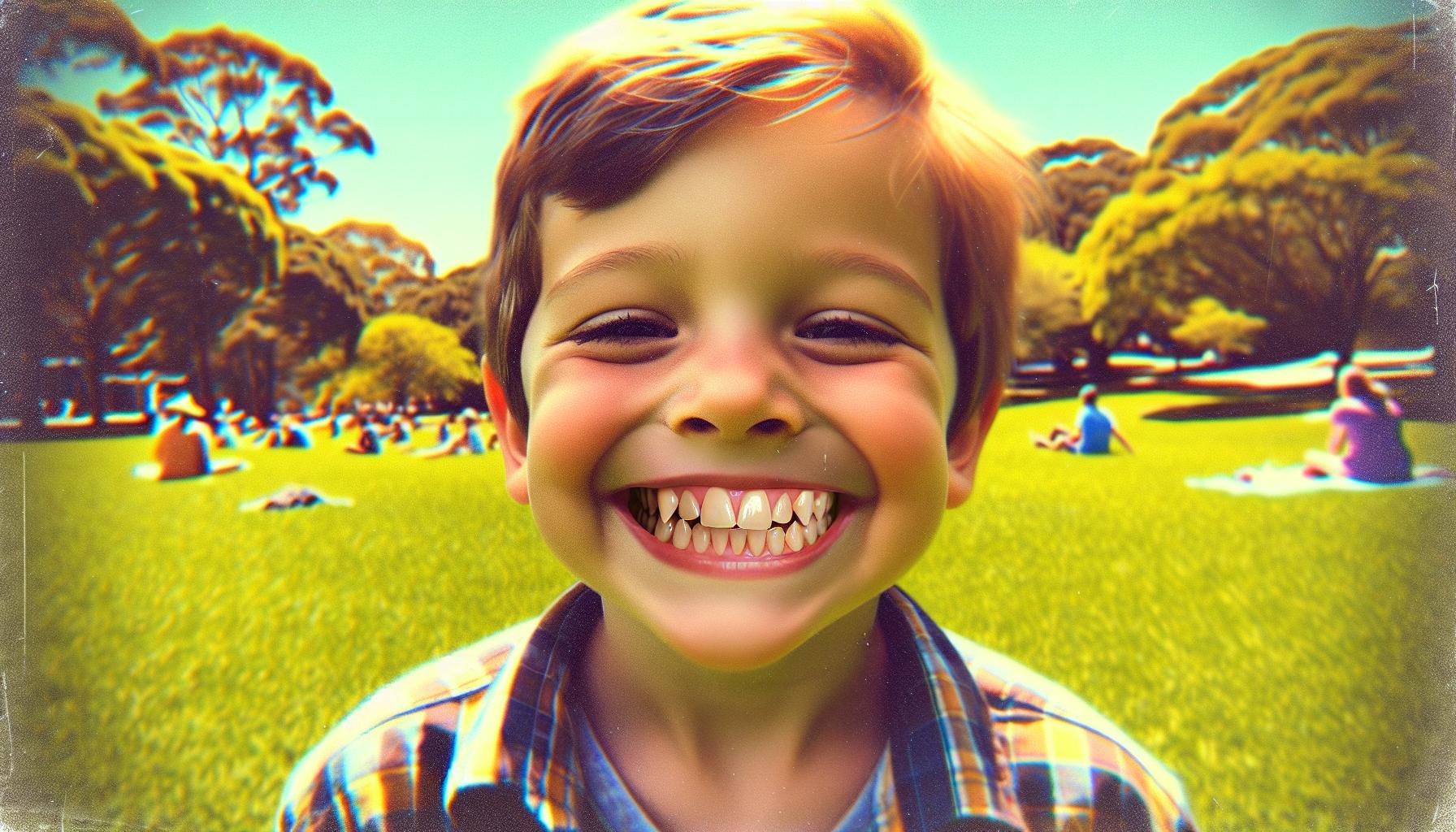Many parents wonder about the phenomenon of shark teeth in kids, a term that describes the process of losing baby teeth and the emergence of adult teeth. This transitional phase can be both exciting and concerning as children navigate their dental changes. Understanding how common this occurrence is and what to expect can help parents support their children through this natural milestone.
Overview of Shark Teeth in Kids
Shark teeth in kids is a term that describes the typical transition from baby teeth to adult teeth. This process usually begins between ages six and seven, when children start losing their primary teeth. It’s common for children to develop adult teeth behind the existing baby teeth before they fall out, resembling a shark’s row of teeth.
Shark teeth commonly occur when adult teeth push through the gums before baby teeth have fully shed. This scenario may lead to teeth crowding if baby teeth do not fall out in time. Parents should monitor this situation, as removing baby teeth prematurely can cause issues.
The emergence of shark teeth can vary in frequency. Approximately 90% of children experience this phenomenon, which usually continues until age twelve. Most children report no pain during this transition, though some may experience mild discomfort as teeth shift.
Understanding this process helps parents prepare for any concerns that may arise. It reassures them that shark teeth are a normal part of dental development. The phenomenon reflects natural growth patterns, ensuring healthy lifelong dental habits.
Understanding Shark Teeth

Shark teeth refer to the phenomenon where adult teeth grow in behind baby teeth before they fall out. This process is common and occurs in most children during their dental development.
What Are Shark Teeth?
Shark teeth occur when adult teeth emerge before the primary teeth have shed. Typically, this process begins between the ages of six and seven. As the permanent teeth push through the gums, children may exhibit two rows of teeth, resembling a shark’s dentition. This condition often resolves naturally as the baby teeth eventually loosen and fall out, allowing the adult teeth to take their proper position.
Differentiating Shark Teeth from Regular Teeth
Shark teeth differ from regular teeth in placement and timing. Regular teeth follow a sequential order: baby teeth are shed, and adult teeth replace them. In contrast, shark teeth appear when adult teeth erupt while baby teeth remain in place. This can lead to a crowded appearance in the mouth. Parents should observe for any signs of discomfort and consult a dentist if crowding persists beyond the expected timeline. Recognising this distinction can help parents manage their child’s dental development effectively.
Prevalence of Shark Teeth in Children
Shark teeth are a common occurrence during childhood dental development, particularly between the ages of six and twelve. Understanding the prevalence of this phenomenon helps parents support their children effectively.
Age Factors and Timing
Shark teeth most frequently appear when children are six or seven years old, coinciding with the loss of primary teeth. This age range marks the beginning of erupting adult teeth, with many children losing their first baby teeth shortly after this period begins. The process typically continues until age twelve, with most children transitioning smoothly through various stages of tooth loss and adult teeth emergence.
Geographical Variations
Geographical factors influence the prevalence of shark teeth in children, as dental health practices and genetics vary across regions. Studies indicate that the timing of tooth loss may differ slightly by location, attributed to differences in diet and healthcare. For instance, in some populations, children may begin losing baby teeth slightly earlier or later due to these factors. Understanding local trends helps parents anticipate the timing of this dental milestone in their children.
Signs and Symptoms of Shark Teeth
Shark teeth are identifiable when adult teeth begin to emerge behind existing baby teeth. Parents should be vigilant, as this transition often presents distinct signs.
Identifying Shark Teeth
Identifying shark teeth involves recognising specific patterns. Parents may notice the following indicators:
- Visible Adult Teeth: Adult teeth appear beneath the gum line, often positioned behind baby teeth.
- Persistent Baby Teeth: Baby teeth remain in place even after adult teeth start emerging.
- Crowding: A crowded appearance occurs when baby and adult teeth coexist in the same space.
- Gaps: Noticeable gaps may form as some baby teeth loosen without being fully shed, while others remain intact.
Regular dental check-ups play a key role in monitoring these developments. Dentists can provide assessments and address any concerns regarding the presence of shark teeth.
Potential Discomfort and Concerns
Potential discomfort during the shark teeth phase can vary among children. Common symptoms include:
- Mild Pain: Some children may experience slight discomfort as adult teeth push through gums.
- Sensitivity: Increased sensitivity may occur when eating or touching the affected areas.
- Altered Speech: Changes in speech can manifest if teeth are misaligned due to crowding.
- Difficulty Chewing: Discomfort while eating might arise as teeth transition.
Parents should consult a dentist if discomfort persists. Understanding these signs helps ensure children transition smoothly through this dental phase.
Managing Shark Teeth in Kids
Managing shark teeth in kids involves careful observation and timely action. Parents play a crucial role in navigating this dental transition.
When to Seek Professional Advice
Parents should consult a dentist if baby teeth do not fall out as expected, especially after age seven. Signs indicating the need for professional advice include persistent baby teeth, significant crowding, or pain during normal activities like chewing. Regular dental check-ups are important for assessing progression and ensuring dental health.
Treatment Options and Recommendations
Treatment options for shark teeth depend on individual circumstances. Common recommendations include:
- Monitoring Development: Regularly check for gaps or crowding in the child’s mouth.
- Dental Check-ups: Schedule visits every six months for professional assessments.
- Consider Extraction: If a baby tooth remains stubborn, a dentist might recommend extraction to relieve crowding.
- Promote Dental Hygiene: Encourage brushing and rinsing to keep teeth clean during this phase.
- Educate the Child: Teach children about the importance of dental health, reassuring them about the normality of this process.
With proactive management and regular dental care, parents can support their children through this stage of development effectively.
Conclusion
Shark teeth are a common and natural part of a child’s dental development. With about 90% of children experiencing this phenomenon, it’s vital for parents to understand its significance. Monitoring the transition from baby teeth to adult teeth helps ensure that any potential issues are addressed promptly.
Regular dental check-ups play a crucial role in managing this phase effectively. By staying informed and supportive, parents can help their children navigate this exciting milestone with confidence. Understanding the typical timeline and signs of shark teeth allows families to embrace this natural growth process, promoting healthy dental habits for the future.
Frequently Asked Questions
What are shark teeth in children?
Shark teeth refer to the process where adult teeth emerge behind baby teeth, typically occurring between ages six and seven. This phenomenon resembles a shark’s row of teeth and is a normal part of dental development in children.
At what age do children usually get shark teeth?
Children usually begin to experience shark teeth between the ages of six and seven. This process continues until around age twelve, when most children have lost all their primary teeth.
Why do shark teeth occur?
Shark teeth occur when adult teeth push through the gums before the baby teeth have fallen out. This can lead to crowding if the baby teeth remain in place too long.
Are shark teeth painful for children?
Most children do not experience pain during the shark teeth phase. However, some may feel mild discomfort, such as sensitivity or slight pain, as adult teeth emerge.
How can parents manage shark teeth in children?
Parents can manage shark teeth by monitoring their child’s dental development, scheduling regular dental check-ups, and consulting a dentist if baby teeth do not fall out as expected or if crowding occurs.
When should I be concerned about my child’s shark teeth?
You should consult a dentist if your child’s baby teeth do not fall out by age seven, if there is significant crowding, or if your child experiences persistent pain or discomfort during normal activities like chewing.
Is the timing of tooth loss the same everywhere?
The timing of tooth loss can vary based on factors such as genetics, diet, dental health practices, and healthcare accessibility. Local trends may influence when children experience shark teeth.
What signs indicate my child is experiencing shark teeth?
Signs of shark teeth include visible adult teeth emerging behind baby teeth, persistent baby teeth, crowding, noticeable gaps, and mild discomfort during chewing or sensitivity. Regular dental check-ups can help monitor these signs.
What dental hygiene practices can help during this phase?
Encouraging good dental hygiene practices, such as regular brushing and flossing, is essential during the shark teeth phase. Educating children about the importance of dental care helps promote healthy habits as their teeth transition.
